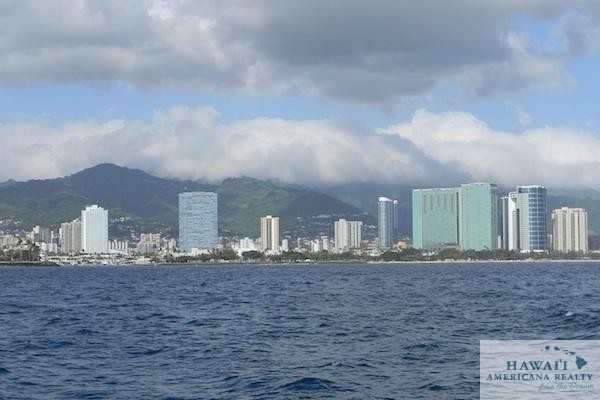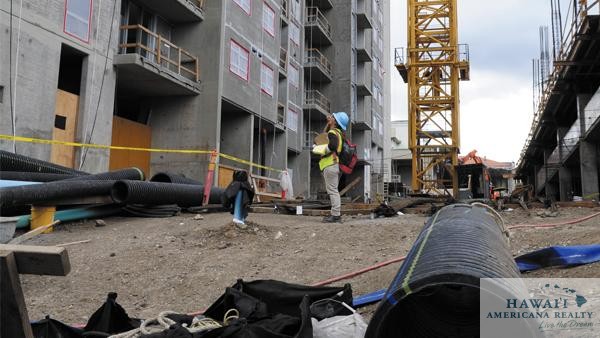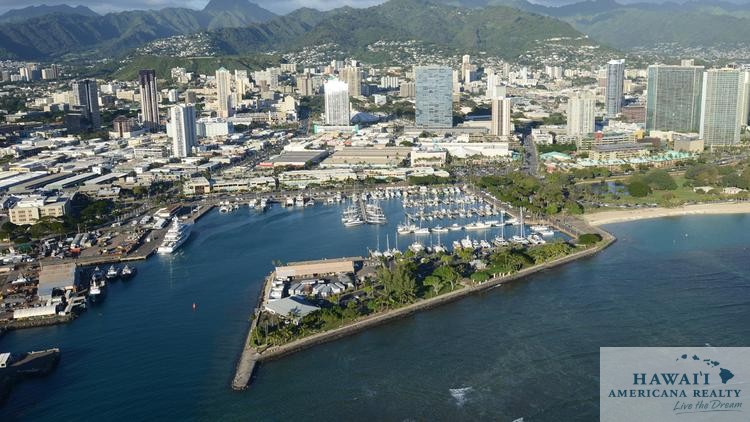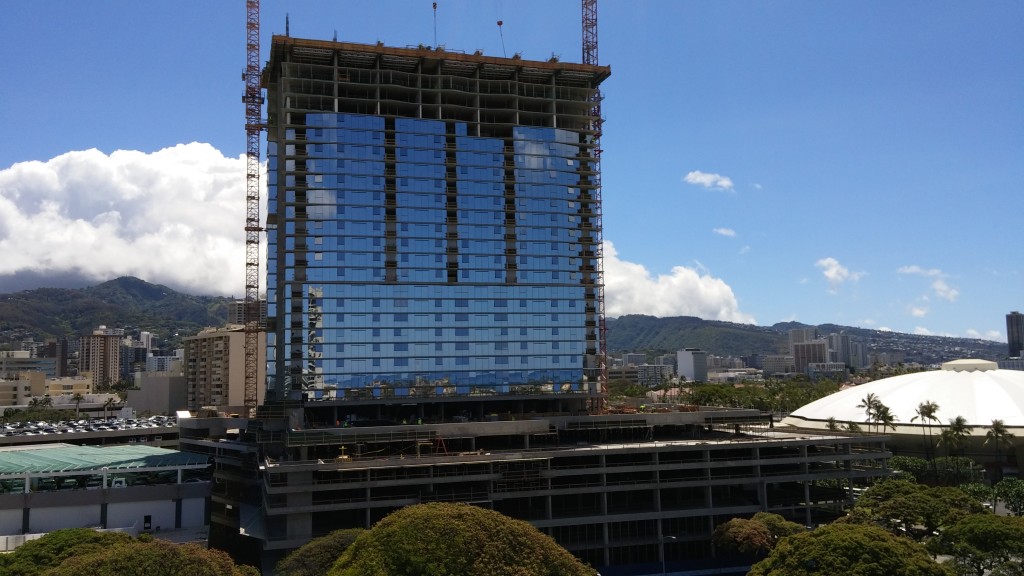Kakaako plan would include housing near transit stations, grocery stores

Hawaii regulators unveiled an update Wednesday for the Honolulu neighborhood of Kakaako’s transit-oriented development plan calling for diverse residential building types, ground-oriented family housing near transit stations, additional reserved housing, grocery stores, cultural and community amenities, food trucks and spaces for artists. Deepak Neupane, director of planning and development for the Hawaii Community Development Authority, […]
Honolulu’s Kakaako to get help from feds on boosting healthy food production
Hawaii is one of 22 states to be chosen for a federal partnership to boost economic opportunities for local farmers and other businesses promoting childhood wellness via access to healthy local food in the Honolulu area of Kakaako Makai, the U.S. Environmental Protection Agency said Tuesday. The “Local Foods, Local Places” initiative involves six federal […]
Developer gets waiver for Honolulu condo on Kakaako glass rule, HCDA rules

The Hawaii Community Development Authority has given the developer of a Kakaako condominium a waiver regarding a glass rule issue. The state agency regulating development in the Honolulu neighborhood on Wednesday unanimously approved Downtown Capital LLC’s petition for a waiver to the rule, and deleted a section of the developer’s development permit for its 801 […]
Hawaii agency delays decision on redevelopment of Kewalo Basin Harbor lands

The Hawaii Community Development Authority has delayed making a decision on two separate proposals from two developers on renovations to the lands surrounding Kewalo Basin Harbor in the Honolulu neighborhood of Kakaako. At its regular meeting on Wednesday, which lasted until nearly 6 p.m., the state agency that regulates development in the area heard once […]
HCDA starts taking at look at glass issue for another Kakaako condominium

The Hawaii Community Development Authority held its first public hearing Wednesday that addressed a glass rule issue at a second Kakaako condominium, which lasted nearly an hour with no questions from the board and no public testimony. The issue deals with the window glazing at Downtown Capital LLC’s completed 801 South St. “Tower A” workforce […]
Hawaii agency delays decision on high-rise ‘glass rule’ for OliverMcMillan’s Symphony Honolulu condo tower

The Hawaii Community Development Authority on Wednesday delayed until next week making a decision on a “glass rule” for Kakaako high-rise projects regarding an issue with OliverMcMillan’s Symphony Honolulu mixed-use condominium tower. The board of the state agency regulating development in the Honolulu neighborhood was to vote on a decision at a meeting on Wednesday, […]
Kakaako development plan includes hotels, high-rises
The Honolulu neighborhood of Kakaako — one of the communities that’s a part of the city’s transit-oriented development plan — could be getting a limited number of hotels and a maximum of three high-rise residential condominiums with heights up to 700-feet, according to public documents. The Hawaii Community Development Authority, the state agency regulating development […]
Hawaii Community Development Authority shelves Kakaako economic accelerator project
The Hawaii agency charged with overseeing the redevelopment of the Honolulu neighborhood of Kakaako has shelved a proposal that would have created an economic accelerator in the former World Gym building on Queen Street. At a Thursday special meeting, the Hawaii Community Development Authority denied the authorization of a memorandum of understanding for the project, […]
Howard Hughes, Japanese developers to present plans for Honolulu’s Kewalo Basin Harbor next week

The Howard Hughes Corp. and Kewalo Waterfront Partners Inc., a partnership between two Japanese firms, are expected to unveil two separate commercial development plans next week for the land surrounding Honolulu’s Kewalo Basin Harbor, an executive with the Hawaii Community Development Authority confirmed to PBN. The state agency overseeing development in the Kakaako area, as […]
Hawaii Community Development Authority board poised for developing Kakaako the right way

It’s been only a few months since a new board has been in place at the Hawaii Community Development Authority, the stage agency regulating developing in the growing Honolulu neighborhood of Kakaako. But talk to people in the community, small-business owners in the area, state lawmakers and individuals on the new board, as I’ve done, […]
